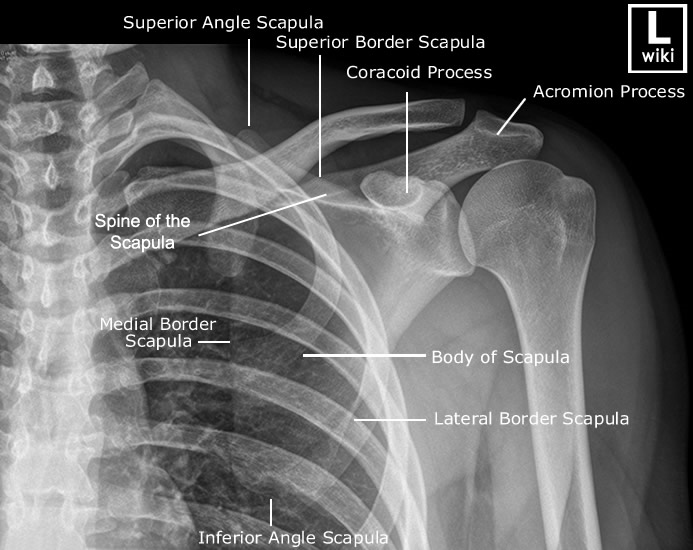IntroductionScapular fractures are important because of their associated morbidity and mortality as much as any other consideration. Scapula fractures are associated with rib fractures, pneumothorax pulmonary contusion as well as vascular and nerve trauma. Associated injuries are found in 80 - 90% of patients with scapular fractures. (<a class="external" href="http://www.wheelessonline.com/ortho/scapular_fractures" rel="nofollow" target="_blank">Wheeless</a>). This page considers all aspects of radiography of scapula fractures.
Anatomy
Video AnatomyRadiographyPathologyCase 1
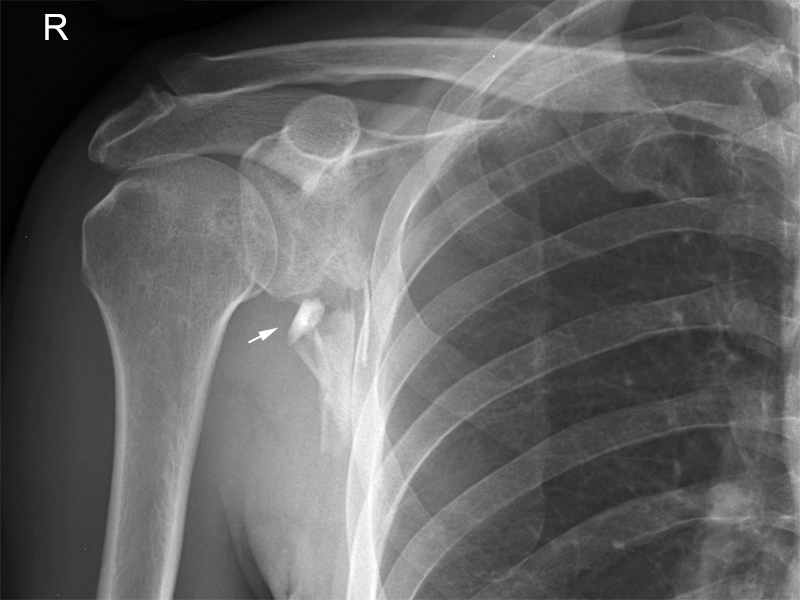 | This patient presented to the Emergency Department with an unknown history. There is a fracture of the body of the scapula (infraspinous). |
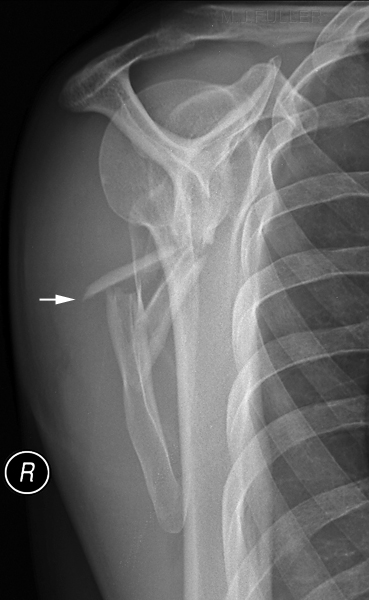 | The lateral view image demonstrates the fracture which traverses the body of scapula from medial to lateral border. |
Case2
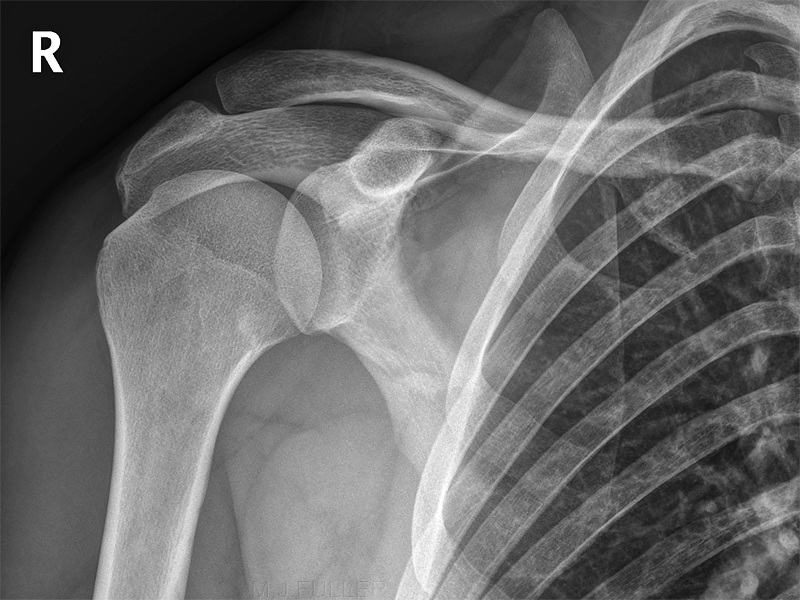 | This 26 year old male presented to the Emergency Department after falling onto his right shoulder.
The AP shoulder view image demonstrates no clear evidence of a fracture. |
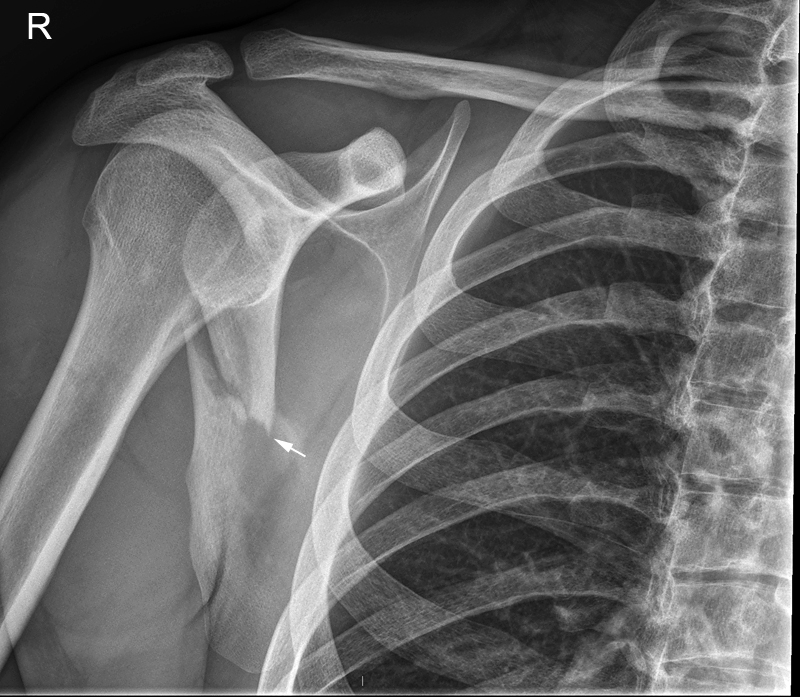 | An under-rotated AP position (neither a true AP nor a true lateral- somewhere in-between) demonstrates the fracture of the body of the scapula clearly. Note that this position, which would normally be considered a poor attempt at an AP shoulder (or equally, a poor attempt at a lateral shoulder) is a useful supplementary view of a fracture of the body of the scapula. |
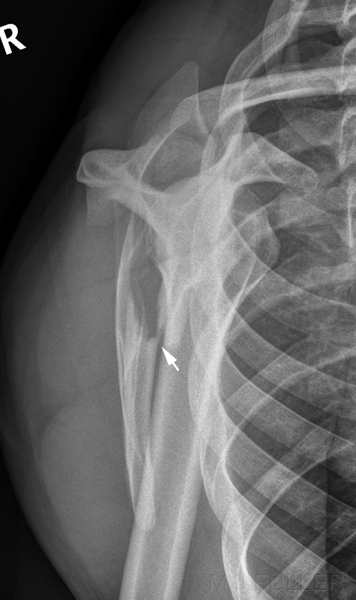 | The lateral scapula view image demonstrates a fracture through the body of the scapula (arrowed) |
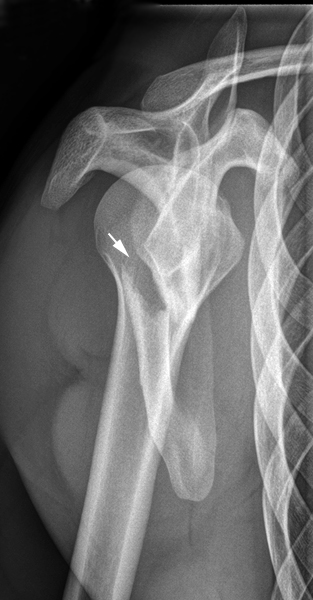 | A second attempt at the lateral view demonstrates the fracture clearly (arrowed) |
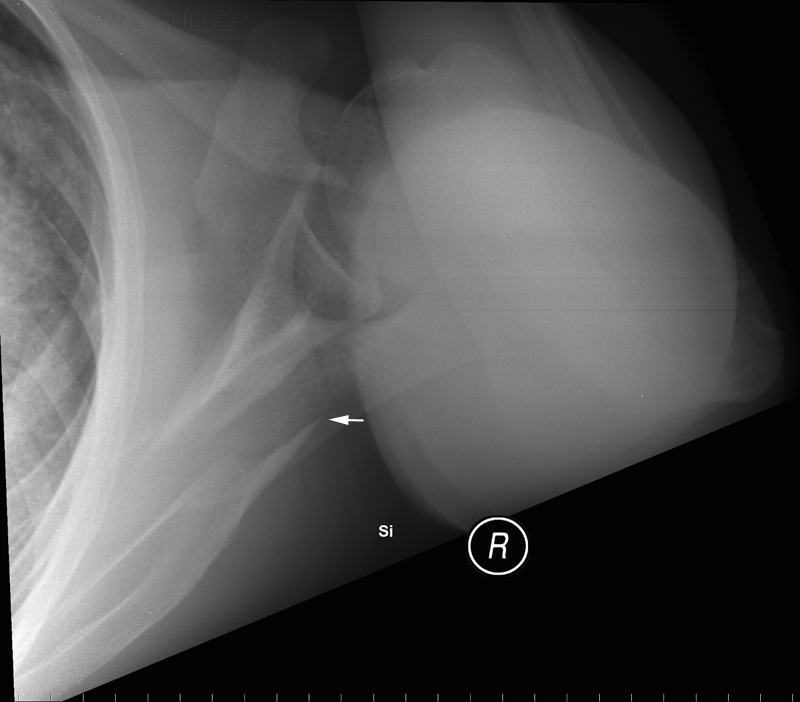 | The SI view of the shoulder can be achieved in patients with shoulder fractures. Note that all of the patients right humerus is included in this view (including the elbow) suggesting that the patient's humerus is minimally abducted. The fracture of the body of the scapula is clearly demonstrated (arrowed). |
Case 3
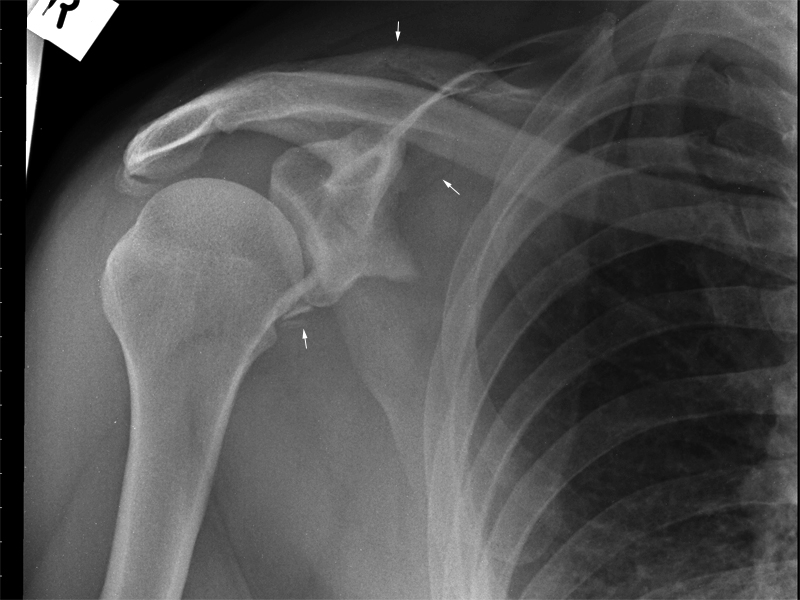 | This 43 year old male presented to the Emergency Department with a history of motorbike accident. He had a painful right shoulder and was referred for shoulder radiography.
There are bony fragments projected inferior to the gleniod. There is faint fracture line extending up to the base of the acromion. |
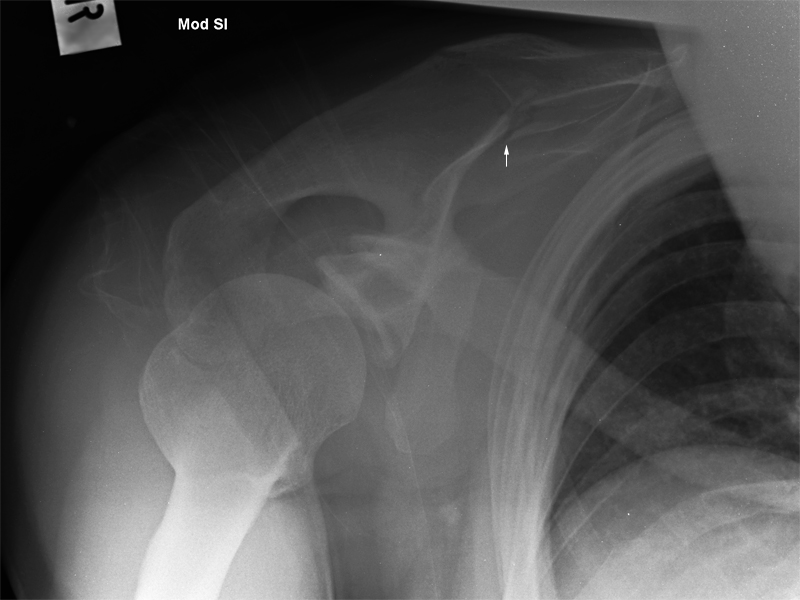 | The modified SI shoulder view is taken with the patient leaning on DARRIN sponge. The fracture extends through the spine of the scapula. |
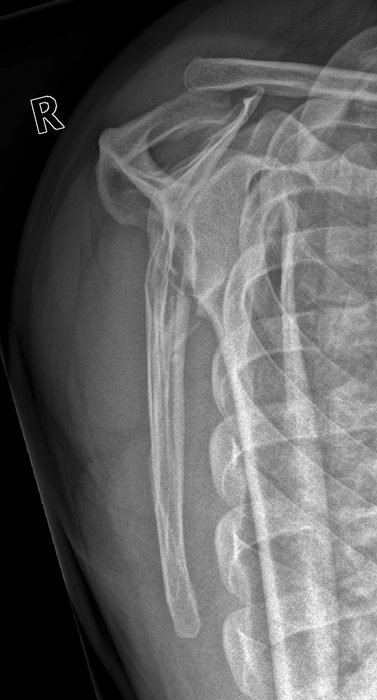 | The lateral scapula view demonstrates a fracture inferior to the glenoid. |
Case 4
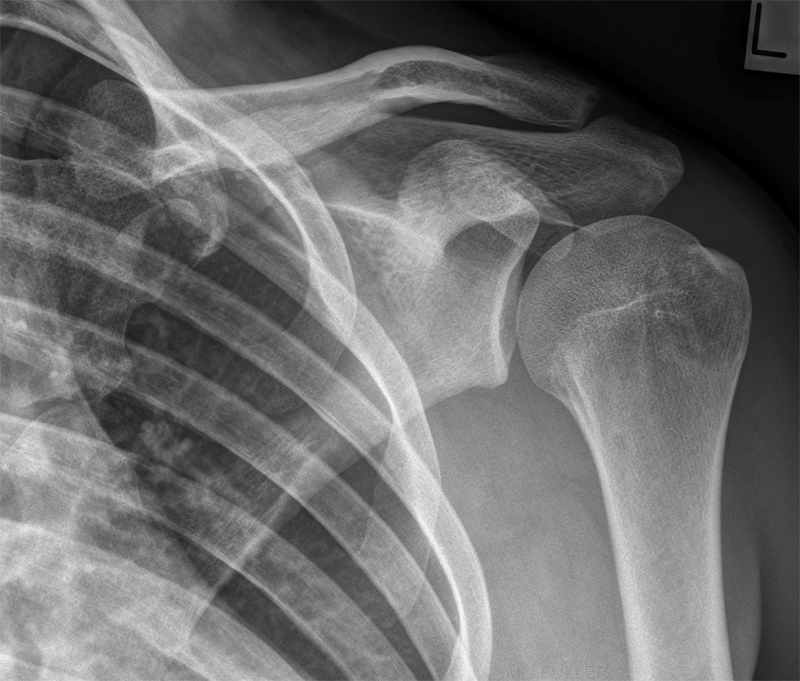 | This 27 year old male presented to the Emergency Department with scapular pain following a sports injury in which he was kneed in the scapula.
The shoulder position is gleno-humeral rather than AP shoulder. There is a vacuum phenomenon.
No clearly demonstrated fracture is seen |
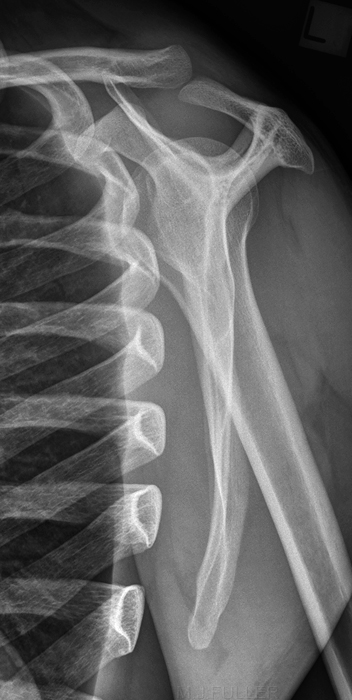 | The lateral scapula image similarly demonstrates no displaced fracture. |
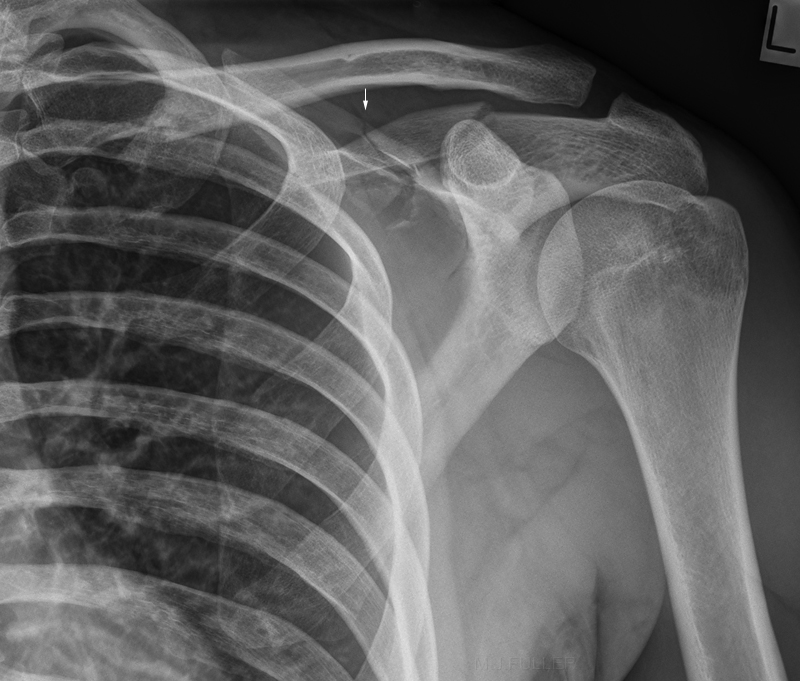 | The AP shoulder image clearly demonstrates a fracture involving the spine of the scapula |
Comment
Scapular fractures are varied and so are the ideal radiographic positions for demonstrating them. There is a considerable number of intermediate positions between the AP shoulder and the lateral scapula. Scapular fractures often show in an oblique position somewhere between AP an lateral. In this case the AP shoulder was the only view that clearly demonstrated the fracture. A differently orientated fracture could have produced entirely opposite results.
Case 5
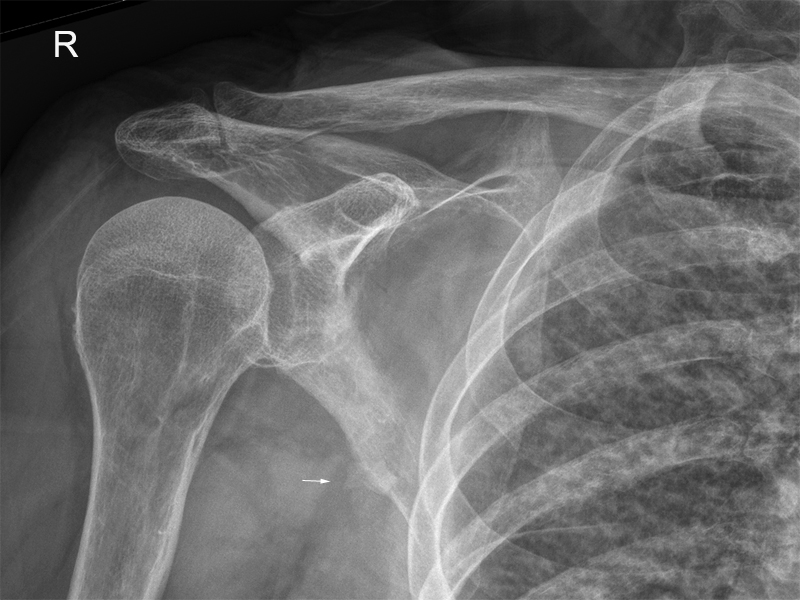 | This 79 year old female presented to the Emergency Department with right shoulder pain following a low speed motorvehicle accident.
There is a fragment of bone demonstrated adjacent to the lateral border of the body of the scapula (arrowed).
abnormal lung opacity noted ? lymphangitis carcinomatosis
Comment
This is not a true AP shoulder position- the patient has not been rotated to bring the shoulder into a true AP position. As is often the case, the under-rotated position has been advantageous in demonstrating the fracture of the scapula. A true AP position tends to superimpose the scapula over the adjacent ribs thereby obscuring fractures of the body of the scapula. In addition, the patient will usually not want to roll onto the injured shoulder and often ends up being imaged as they present (supine with a straight tube). Where it is considered advantageous to produce a true AP shoulder image, tube angulation can be employed as an alternative to patient angulation.
|
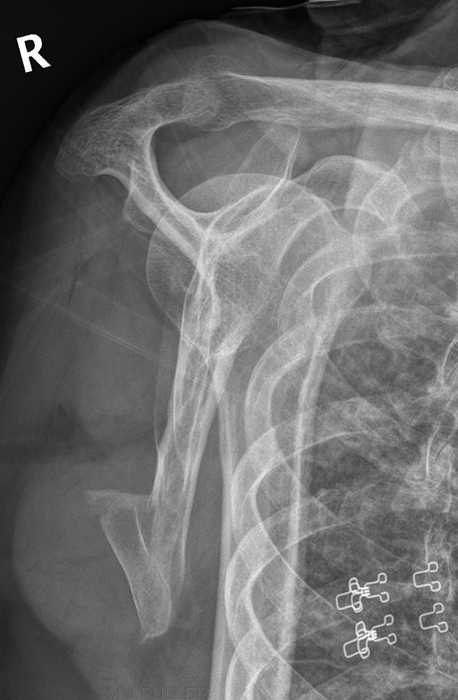 | The lateral scapula image demonstrates a displaced fracture of the inferior aspect of the body of the scapula.
Bra hardware noted. |
Case 6
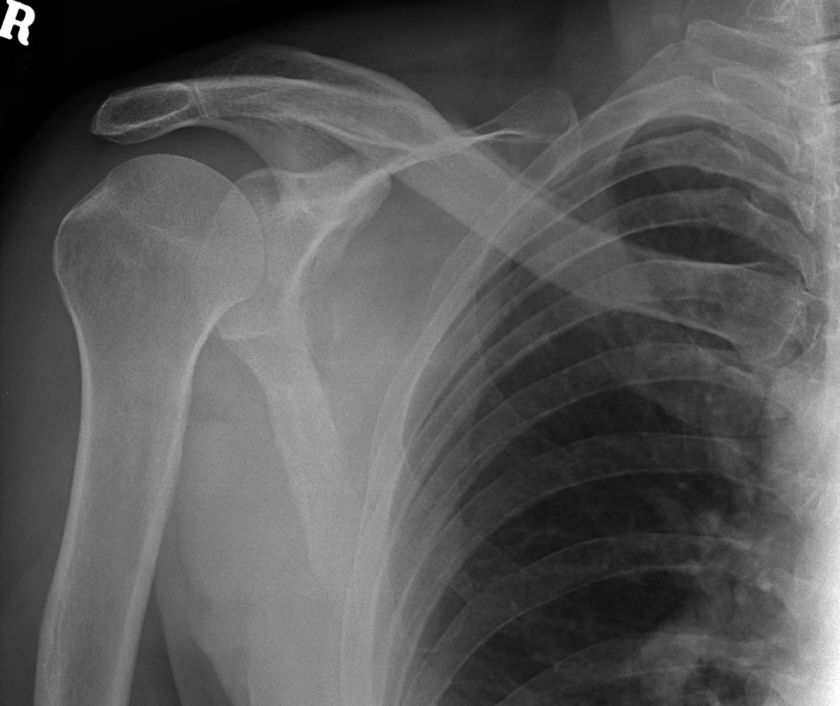 | This 61 year old male presented to the Emergency Department after falling backwards while dancing. He was examined and found to have a painful right scapula. He was referred for right shoulder radiography.
The radiographer noted the high level of pain and discomfort that the patient was demonstrating and therefore chose to utilise a CR non-grid bedside approach to the shoulder radiography. This was a reasonable judgement and reflects an approach that many (if not most) radiographers would have employed in the same circumstances.
The AP shoulder image demonstrates no obvious displaced fracture. |
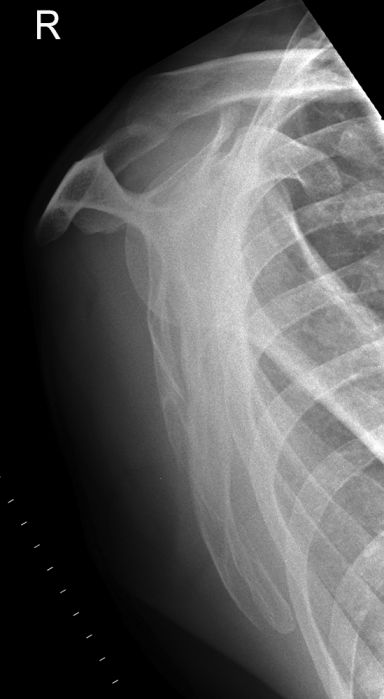 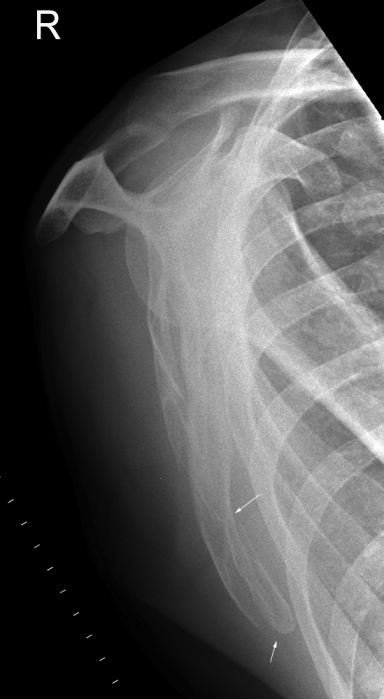 | The AP supine rolled lateral scapula projection image demonstrates a fracture involving the inferior angle of the scapula.
Given that the clinical question had been answered and the radiographer had demonstrated the fracture, is any further imaging justified?
It is not unusual for experienced radiographers to be able to identify fractures which are not detected by the doctors in the Emergency Department. In some cases, the fractures are also missed by the reporting radiologist. You could argue that this is not the radiographer's problem- they have done their job. It is of course little succour to the patient that has been discharged and advised that they have no fracture and can expect to feel better in a few days with minimal analgesia!
|
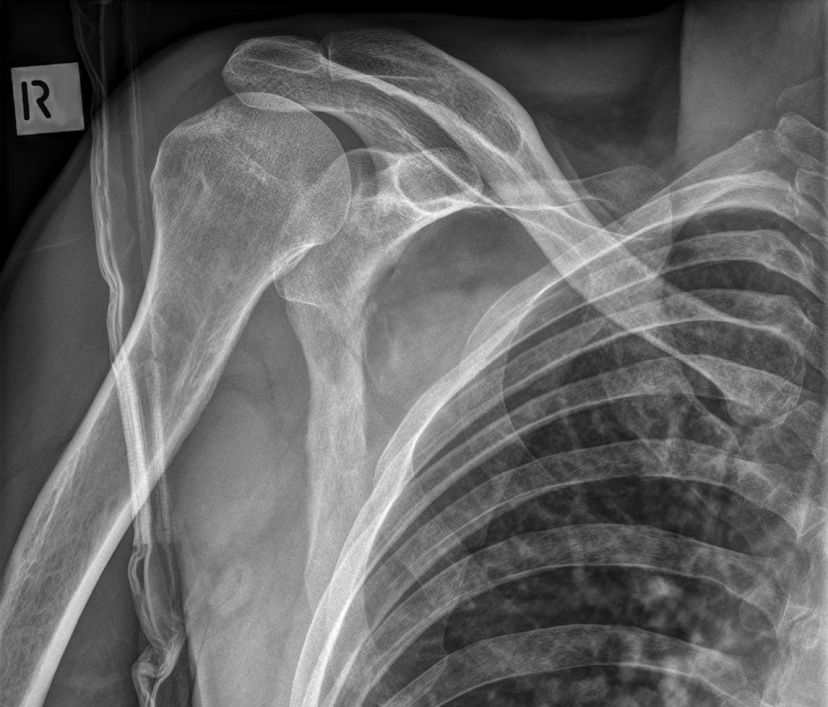 | Further imaging of the patient's right shoulder was undertaken utilising a DR system. |
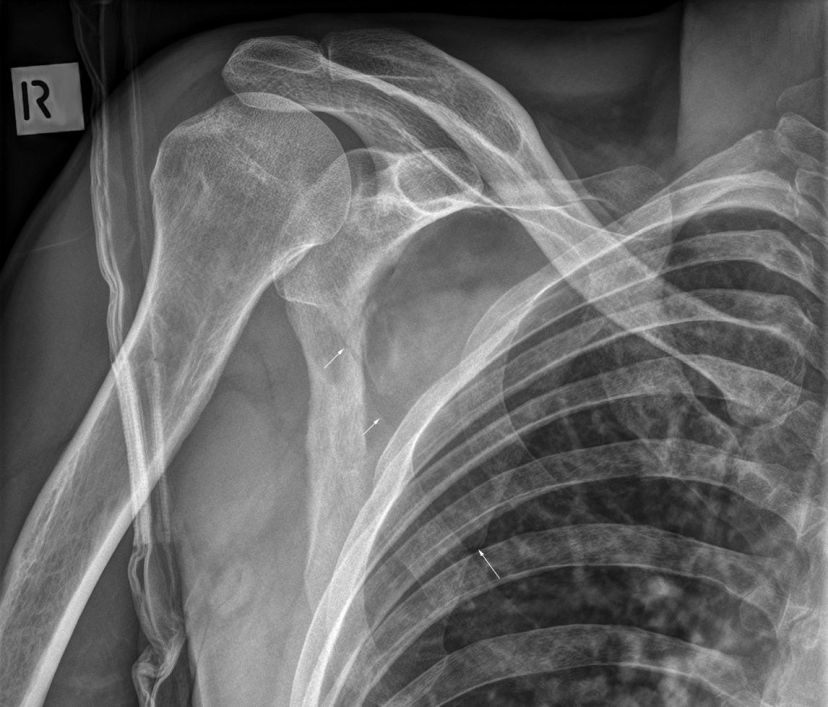 | The patient was unable to rotate further. A long exposure time (0.8 seconds was the maximum exposure time available with this DR system) was employed and the patient was breathing during the exposure- this did achieve some bluring (movement unsharpness) of the lung marking resulting in improved demonstration of the scapula. The fractured scapula was demonstrated clearly with additional evidence of the fracture extending up towards the glenoid. In retrospect, this was also demonstrated on the original CR AP shoulder image. |
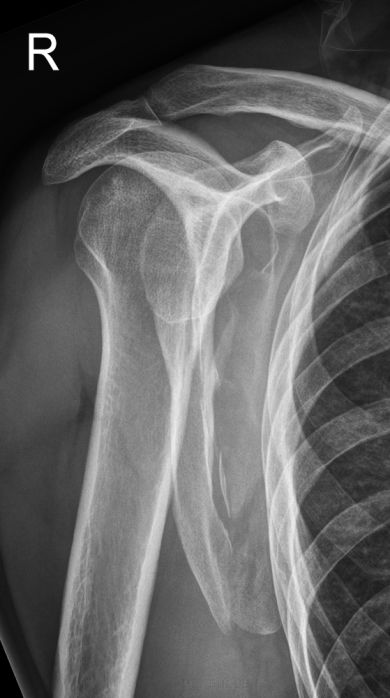 | This is a deliberate under-rotated lateral scapular position- this oblique shoulder position can be very useful in demonstrating scapular fractures. This is a DR image. |
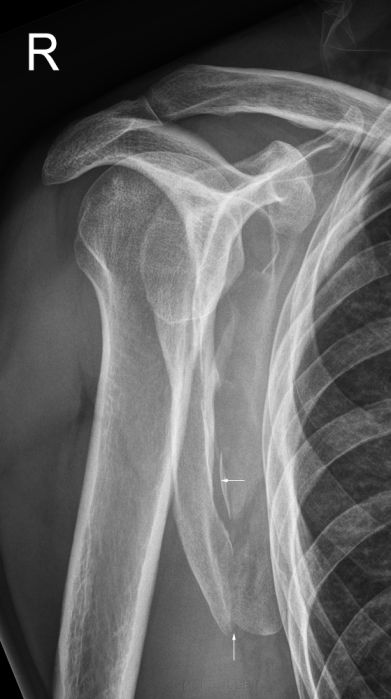 | The DR oblique shoulder image demonstrates the fracture of the inferior aspect of the scapula clearly. |
Comment
Where there are both bucky DR and cassette CR systems available, the radiographer must make a balanced judgement as to which system is most appropriate given all of the circumstances of the case. The DR system is more likely to produce images which demonstrate all fractures clearly.
... back to the
wikiradiography home page
... back to the
Applied Radiography home page
